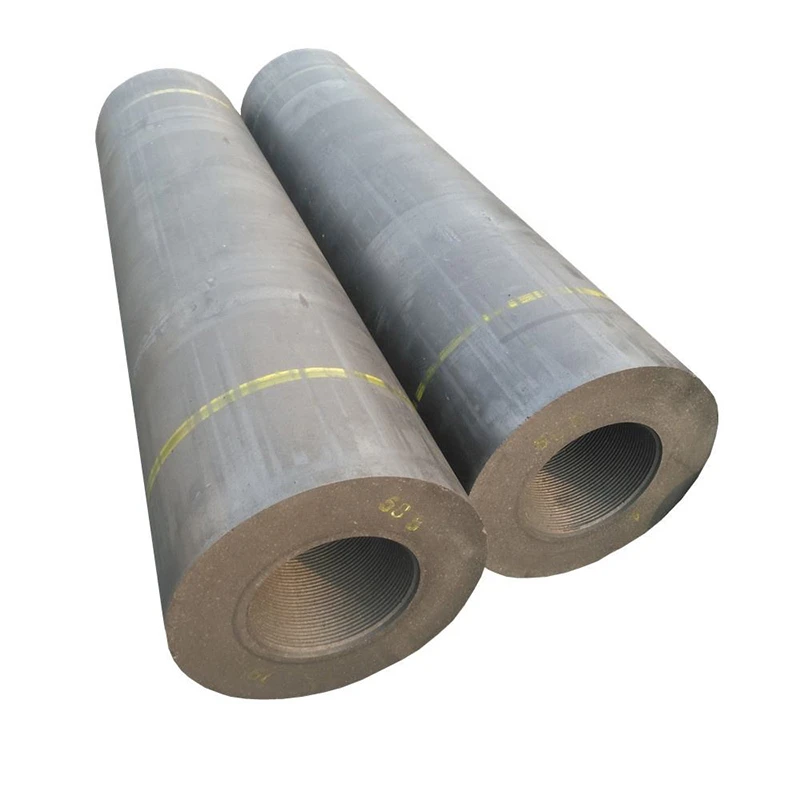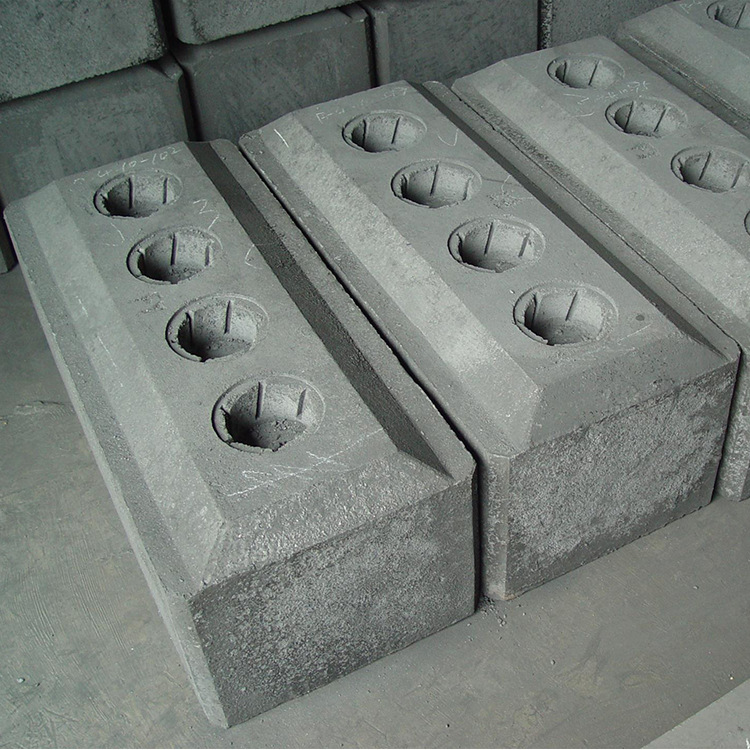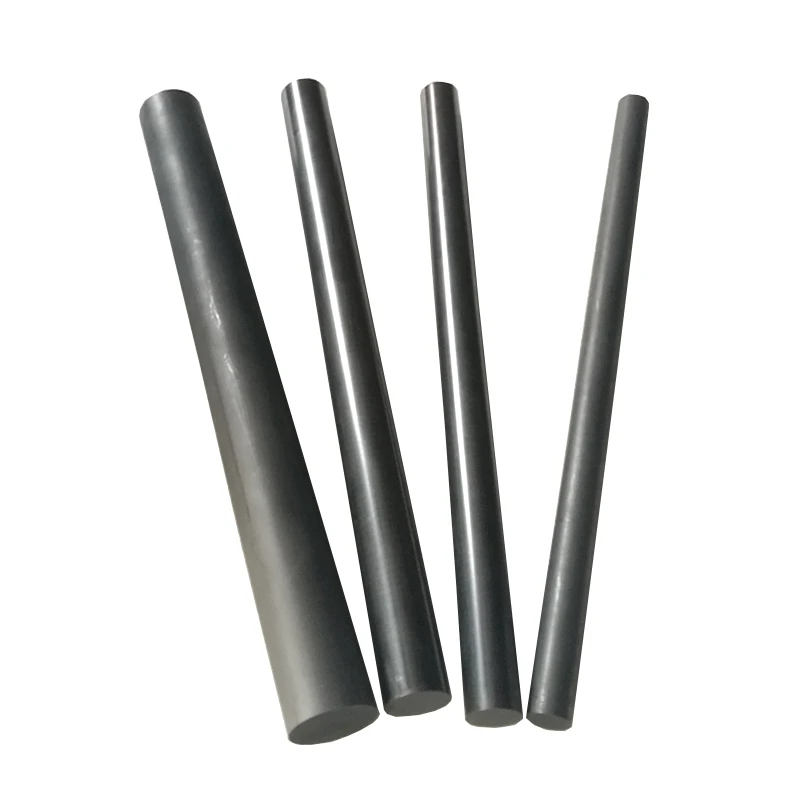Ultra-High Power (UHP) graphite electrodes are absolutely vital components in modern steelmaking, particularly in electric arc furnaces (EAFs). Understanding the dynamics behind uhp graphite electrode prices, especially for common sizes like the 600mm diameter, is crucial for procurement professionals like Mark Thompson in the USA, Europe, and beyond. This article delves deep into the factors influencing the price of uhp graphite electrode units, analyzes the current price trend, and offers insights to help you navigate the market effectively and secure the best price per ton. We’ll explore everything from raw material costs to market trends, providing a comprehensive analysis of uhp graphite electrode pricing for 2024 and beyond. Stay tuned to understand why consistent quality and reliable supplier relationships are paramount in this volatile market.
1. What Exactly is a UHP Graphite Electrode?
A UHP graphite electrode stands for Ultra-High Power graphite electrode. Think of it as a super-durable, highly conductive consumable used primarily in electric arc furnaces (EAF) and sometimes ladle furnaces for steelmaking. Its main job is to conduct extremely high levels of electricity into the furnace to melt scrap steel and other raw materials. These electrodes operate under intense conditions – high temperatures reaching thousands of degrees Celsius and significant electrical loads.
What makes a uhp graphite electrode different from regular power (RP) or high power (HP) graphite electrodes is its superior quality, primarily derived from the use of premium needle coke as the main raw material. This results in lower electrical resistance, higher density, better thermal shock resistance, and greater resistance to oxidation. These properties allow UHP electrodes to handle the higher current densities required in modern, efficient EAFs, leading to faster melt times and increased steel production rates. Essentially, uhp graphite electrode products are designed for the most demanding applications in the steel industry.
As a factory owner, I, Allen, can attest that producing consistent, high-quality uhp graphite electrode units requires meticulous control over the entire manufacturing process, from sourcing premium needle coke to precise machining. The performance difference is tangible, impacting everything from energy consumption to overall furnace productivity. Understanding this distinction is the first step in appreciating the price of uhp graphite electrode products.

2. Why is the 600mm UHP Graphite Electrode Size So Significant in the Steel Industry?
The 600mm diameter uhp graphite electrode (often referred to as 24 inches) is one of the most commonly used sizes in large-capacity electric arc furnaces worldwide. Its significance stems from its balance between current carrying capacity and physical manageability within the demanding environment of a steel manufacturing furnace. Furnaces designed for high steel production volumes often require electrodes of this dimension to deliver the immense power needed efficiently.
For steel mills operating large EAFs, the 600mm uhp graphite electrode offers an optimal solution for melting large quantities of scrap steel quickly. Its size allows for high electrical current density, crucial for achieving the rapid melting cycles that modern steelmaking demands. Furthermore, the supply chain and manufacturing process for 600mm electrodes are well-established, making them readily available compared to some ultra-large or custom sizes.
From our experience at the factory, the demand for 600mm uhp graphite electrode units is consistently strong, reflecting its widespread use in the global steel industry. Procurement officers like Mark Thompson frequently specify this size due to its compatibility with a large number of existing EAF installations. Therefore, tracking the price trend specifically for 600mm uhp graphite electrode offers a valuable benchmark for the broader graphite electrodes market. Understanding the dynamics for this specific size helps in making informed purchasing decisions.
3. How Are UHP Graphite Electrodes Manufactured and What Raw Materials Are Key?
The manufacturing process for a UHP graphite electrode is complex and energy-intensive, requiring several key stages to transform raw material into a high-performance product. It starts with carefully selected raw materials, the most critical being premium needle coke. Needle coke, derived from petroleum or coal tar pitch, has a unique needle-like crystalline structure that provides excellent electrical conductivity and thermal expansion properties necessary for ultra-high power applications.
The key steps typically involve:
- Mixing: Needle coke is mixed with a binder, usually coal tar pitch, to form a paste.
- Forming: This paste is then extruded or pressed into the desired electrode shape (e.g., 600mm diameter cylinders).
- Baking: The formed "green" electrodes are baked in large kilns over several weeks at temperatures around 800-1000°C to carbonize the binder and create a solid carbon structure.
- Impregnation: To increase density and strength, the baked electrodes are often impregnated with pitch and rebaked. This step is crucial for UHP graphite electrode quality.
- Graphitization: This is the most critical and energy-intensive stage. Electrodes are heated in specialized furnaces to temperatures approaching 3000°C. This transforms the amorphous carbon into crystalline graphite, significantly enhancing electrical conductivity and thermal properties. This graphitization process defines the electrode’s performance.
- Machining: Finally, the graphitized electrodes are precision-machined to exact dimensions, including threading the ends for connection within the electric arc furnace.
The quality of the needle coke and the precision control throughout these stages, especially graphitization, directly impact the final performance and overall cost of the uhp graphite electrode. Any compromise in raw material or process control can lead to premature failure in the demanding EAF environment. As manufacturers, we place immense focus on securing high-grade needle coke and maintaining stringent quality control throughout the electrode manufacturing cycle.
4. What Key Factors Drive the UHP Graphite Electrode Price?
The price of uhp graphite electrode products, particularly the widely used 600mm size, is influenced by a complex interplay of factors. Understanding these drivers is essential for anyone involved in procurement for the steel industry. It’s not just about the supplier quoting a number; it’s about market forces.
Key drivers include:
- Raw Material Costs: The price of premium needle coke is the single most significant factor. Needle coke supply can be tight, and its price is linked to crude oil prices and demand from other sectors like lithium-ion batteries for the electric vehicle market. Fluctuations in petroleum coke and coal tar pitch prices also play a role.
- Energy Costs: The graphitization stage is extremely energy-intensive. Rising electricity and natural gas prices directly increase production costs for graphite electrode production.
- Supply and Demand Dynamics: This is fundamental. High demand from the steel industry, particularly growth in EAF steel production, pushes uhp graphite electrode price upwards. Conversely, a slowdown in steel manufacturing can soften demand and prices. The overall supply-demand balance for graphite electrodes for electric furnaces is critical.
- Geopolitical Factors: Events like trade disputes, sanctions, or instability in key producing regions (like China) can disrupt the supply chain and impact availability and electrode price. International trade policies play a significant role.
- Environmental Regulations: Stricter environmental regulations on electrode manufacturing processes, especially in China, can increase compliance costs for producers, which may be passed on to buyers, influencing the price trend.
- Technological Advancements: Innovations in electrode manufacturing or EAF technology can influence consumption rates and, indirectly, the demand for graphite and its price.
For buyers like Mark, monitoring these factors mentioned is crucial for anticipating shifts in the uhp graphite electrode price and developing effective strategic procurement strategies. A reliable supplier should ideally provide some transparency regarding these cost drivers.
5. Understanding the Price Trend: What Influences Fluctuation in Electrode Prices?
The price trend for UHP graphite electrodes, including the benchmark 600mm size, is notoriously volatile. Understanding the reasons behind this fluctuation helps in forecasting and budgeting. The factors driving the overall price also cause these trends, but their interaction creates the market dynamics.
Several elements contribute significantly to the price trend volatility:
- Needle Coke Availability: As mentioned, needle coke is the critical raw material. Supply bottlenecks or sudden surges in demand (e.g., from the rapidly growing electric vehicle battery sector) can cause sharp spikes in needle coke prices, directly impacting the uhp graphite electrode price. Historical price data clearly shows this correlation.
- Steel Market Cycles: The steel industry is cyclical. During boom times, steel production surges, increasing the demand for graphite electrodes and pushing prices up. During downturns, demand falls, leading to price corrections. The price trend often mirrors the health of the global steel market.
- Inventory Levels: Both manufacturers’ and steel mills’ inventory levels play a role. High inventories can depress spot prices, while low inventories can exacerbate price increases during periods of strong demand. Strategic inventory management by major players like GrafTech International, Showa Denko, and Tokai Carbon can influence market trends.
- Geopolitical Events & Trade Policies: Sudden geopolitical events, tariffs, or changes in international trade policies can abruptly alter supply chain dynamics and costs, causing sharp swings in the price trend. For instance, export restrictions or new tariffs can significantly impact landed costs for buyers in the USA or Europe sourcing from China.
- Speculation: Like many commodities, the graphite electrode market can sometimes be influenced by speculative buying and selling, especially during periods of uncertainty, further contributing to price trend volatility.
Analyzing the historical price movements alongside these influencing factors provides a clearer picture of the price trend and helps make informed decisions. As a manufacturer, we observe these market dynamics closely to anticipate shifts and manage our production rates.

6. What is the Current Market Trend for UHP Graphite Electrode Prices in 2024?
Predicting the exact uhp graphite electrode price is always challenging, but we can analyze the current market trends influencing prices in 2024. After periods of significant volatility in previous years, the market has seen some stabilization, but underlying factors continue to exert pressure.
As of early 2024, the price trend for UHP graphite electrodes, including the 600mm size, appears relatively stable compared to the extreme peaks seen a few years ago. However, several factors suggest potential upward pressure:
- Resilient Steel Demand: While global economic conditions present uncertainty, demand for steel, particularly produced via the more environmentally friendly EAF route (which uses graphite electrodes), remains relatively robust in many regions. The global push toward EAF steelmaking continues.
- Elevated Raw Material Costs: Needle coke prices, while perhaps off their absolute highs, remain elevated compared to historical averages. This continues to be a primary driver underpinning the uhp graphite electrode price. Raw material costs are sticky.
- Ongoing Supply Chain Considerations: While major disruptions have eased, global supply chain logistics still face challenges and costs remain higher than pre-pandemic levels. Geopolitical tensions continue to pose risks.
- Energy Price Volatility: Energy costs, crucial for the graphitization process, remain volatile in many regions, impacting production costs.
- Environmental Pressures: Ongoing implementation of stricter environmental regulations in key producing countries like China continues to influence graphite electrode production costs.
Therefore, while massive spikes might be less likely in the immediate term (barring unforeseen events), a gradual upward price trend or sustained pricing well above historical lows seems plausible for UHP graphite electrodes in 2024. Buyers should stay informed about market conditions and anticipate that securing the absolute best price requires careful negotiation and potentially longer-term agreements with a trusted supplier. The uhp graphite electrode price remains sensitive to supply and demand shifts.
7. How Does Steel Production Directly Impact the Demand for Graphite Electrodes?
The link between steel production and the demand for graphite electrodes is direct and profound, especially concerning UHP graphite electrodes used in electric arc furnaces (EAFs). EAFs primarily use scrap steel as their main input, melting it down using the intense heat generated by an electric arc passing between the graphite electrodes and the metal bath.
Here’s how the relationship works:
- EAF Market Share: The global steel industry is increasingly shifting toward EAF steelmaking due to its lower carbon footprint compared to traditional blast furnace routes and its ability to utilize recycled scrap steel. As the share of EAF steel production grows, the overall demand for graphite electrodes increases proportionally.
- Operating Rates: When steel mills run their EAFs at high operating rates to meet strong market demand for steel, they consume graphite electrodes more rapidly. Higher steel production directly translates to higher electrode consumption.
- Furnace Efficiency: While technological advancements aim to improve efficiency and reduce electrode consumption per ton of steel produced, the sheer volume of steel manufacturing via EAFs ensures a strong baseline demand for graphite electrodes.
- New EAF Installations: Investments in new production capacity using EAF technology create rising demand for graphite electrodes. Regions investing heavily in EAF steelmaking become key markets for electrode suppliers.
Conversely, a significant slowdown in the global economy that dampens construction and manufacturing activity will reduce demand for steel. This leads to lower EAF operating rates or even temporary shutdowns, causing a corresponding drop in the demand for graphite electrodes and potentially softening the uhp graphite electrode price. Therefore, monitoring steel production figures and forecasts is a key part of trend analysis for the graphite electrode market.
8. Are There Significant Regional Differences in UHP Graphite Electrode Prices Globally?
Yes, there can be notable regional differences in the price of uhp graphite electrode units, although global market trends tend to influence prices everywhere. Several factors contribute to these variations:
- Logistics and Shipping Costs: Transporting heavy and relatively fragile graphite electrodes over long distances incurs significant costs. Landed prices in importing regions like the USA, Europe (including Portugal and Greece), or the UAE, Oman, and Qatar will naturally be higher than ex-works prices from a factory in China due to freight, insurance, and import duties.
- Local Supply and Demand: Regional steel production levels and the concentration of EAFs impact local demand for graphite electrodes. A region with high EAF activity (like parts of the Asia Pacific or North America) might experience stronger demand dynamics than a region with less EAF capacity.
- Supplier Competition: The level of competition among local distributors and international suppliers within a specific region can influence pricing strategies and the availability of the best price.
- Import Tariffs and Trade Policies: International trade policies, including import tariffs or anti-dumping duties, can create significant price disparities between regions. For example, tariffs imposed by the USA on Chinese goods could make uhp graphite electrode units sourced from China more expensive there compared to other regions like Hongkong or the UAE.
- Currency Exchange Rates: Fluctuations in currency exchange rates affect the cost of imported graphite electrodes. A stronger local currency makes imports cheaper, while a weaker currency increases the cost.
While global factors like needle coke prices set a baseline, these regional elements mean that a procurement officer like Mark in the USA might face a different uhp graphite electrode price landscape than a buyer in Oman or Greece. Understanding these regional nuances is important for effective global sourcing and achieving competitive graphite electrode prices.

9. How Can Buyers Like Mark Secure the Best Price for 600mm UHP Graphite Electrodes?
Securing the best price for 600mm UHP graphite electrodes requires more than just comparing quotes. It involves a strategic approach, especially given the market’s volatility and the critical importance of electrode quality. For buyers like Mark Thompson, focusing solely on the lowest electrode price per ton can be risky if it compromises performance or reliability.
Here are key strategies:
- Develop Strong Supplier Relationships: Building long-term relationships with reliable manufacturers like us is crucial. A trusted supplier understands your needs, can offer more consistent pricing, and provides better support. Good communication helps avoid misunderstandings about specifications or delivery schedules – a common pain point.
- Focus on Total Cost of Ownership: Don’t just look at the initial price of uhp graphite electrode. Consider factors like consumption rate, lifespan, and the potential cost of furnace downtime due to electrode failure. A slightly higher-priced but superior quality uhp graphite electrode might offer better value overall.
- Understand Market Timing: Monitor market trends, raw material costs (especially needle coke), and geopolitical factors. Timing purchases during periods of lower demand or stable prices can yield savings, though this requires market insight. Avoid panic buying during price spikes if possible.
- Volume and Contract Negotiations: Larger volume commitments or longer-term contracts can provide leverage for negotiating better graphite electrode prices. However, balance this with the flexibility needed to adapt to changing market conditions.
- Quality Verification: Insist on quality inspection reports and certifications (e.g., ISO standards, material specifications). Verify the supplier‘s credentials to avoid certificate fraud. Visiting the factory, if feasible, provides invaluable insight into their manufacturing process and quality control. We welcome visits from clients like Mark to see our 7 production lines firsthand.
- Diversify Suppliers (Carefully): While strong relationships are key, having qualified alternative suppliers can provide leverage and mitigate risks associated with relying on a single source, especially given potential supply chain disruptions.
- Clear Specifications: Provide detailed specifications to ensure you are comparing like-for-like quotes. Specify grade (UHP), dimensions (600mm), tolerances, and any specific performance requirements.
Ultimately, securing the best price involves balancing cost with quality, reliability, and risk management. It requires staying informed, fostering good communication, and taking a strategic, long-term view of procurement.
10. What Does the Future Hold for UHP Graphite Electrode Prices and Technological Advancements?
Looking ahead, the market for UHP graphite electrodes, including the popular 600mm size, will likely continue to be shaped by ongoing technological advancements and evolving market dynamics. Several key trends will influence future uhp graphite electrode price movements and product development:
- Continued Growth of EAF Steelmaking: The global push for decarbonization favors EAF steel production using scrap steel. This structural shift suggests sustained long-term demand for graphite electrodes, potentially supporting prices.
- Needle Coke Market Evolution: The rising demand for needle coke from the electric vehicle sector for lithium-ion batteries will remain a critical factor. Competition between steelmaking and battery applications could keep needle coke prices elevated, impacting the uhp graphite electrode price. Investment in new production capacity for needle coke will be crucial.
- Technological Improvements: Manufacturers are constantly researching ways to improve uhp graphite electrode performance – reducing consumption rates, increasing strength, and enhancing resistance to oxidation. These technological advancements could potentially lower the overall cost for steelmakers, even if the electrode price per metric ton remains stable or increases slightly due to input costs. Innovations in production techniques like graphitization aim to improve efficiency.
- Environmental Regulations: Increasingly stringent environmental regulations globally will likely continue to add costs to the graphite electrode production process, potentially influencing the baseline price trend. Sustainability will become an even bigger factor.
- Supply Chain Resilience: The industry learned valuable lessons from recent disruptions. Expect continued focus on building more resilient supply chains, potentially involving regional diversification of manufacturing, which could impact regional pricing dynamics.
For buyers, staying informed about these developments is crucial. The uhp graphite electrode will remain indispensable for EAFs, but the interplay between raw material costs (needle coke, petroleum derivatives, coal tar), industry demand, technological advancements, and geopolitical factors will continue to drive price trend fluctuations. Partnering with forward-looking manufacturers who invest in quality and efficiency will be key to navigating the future market successfully. Consider exploring options like our High-power graphite electrode or even Extra Large Graphite Electrode options depending on specific furnace requirements. For diverse needs, we also offer products like high purity 99.9% graphite powder.
Key Takeaways: UHP Graphite Electrode Pricing
- UHP graphite electrodes are critical for EAF steelmaking due to their high performance derived from premium needle coke.
- The 600mm size is a benchmark due to its widespread use in large EAFs balancing power and manageability.
- Needle coke price and availability are the most significant drivers of the uhp graphite electrode price.
- The price trend is volatile, influenced by steel production cycles, energy costs, supply and demand, geopolitical factors, and environmental regulations.
- Current market trends in 2024 suggest relative stability but with potential upward pressure due to resilient demand and elevated input costs.
- Securing the best price involves focusing on total cost of ownership, building strong supplier relationships, verifying quality, and understanding market dynamics.
- The future points towards continued EAF growth, ongoing competition for needle coke, and further technological advancements in electrode performance.
Post time: 03-31-2025



